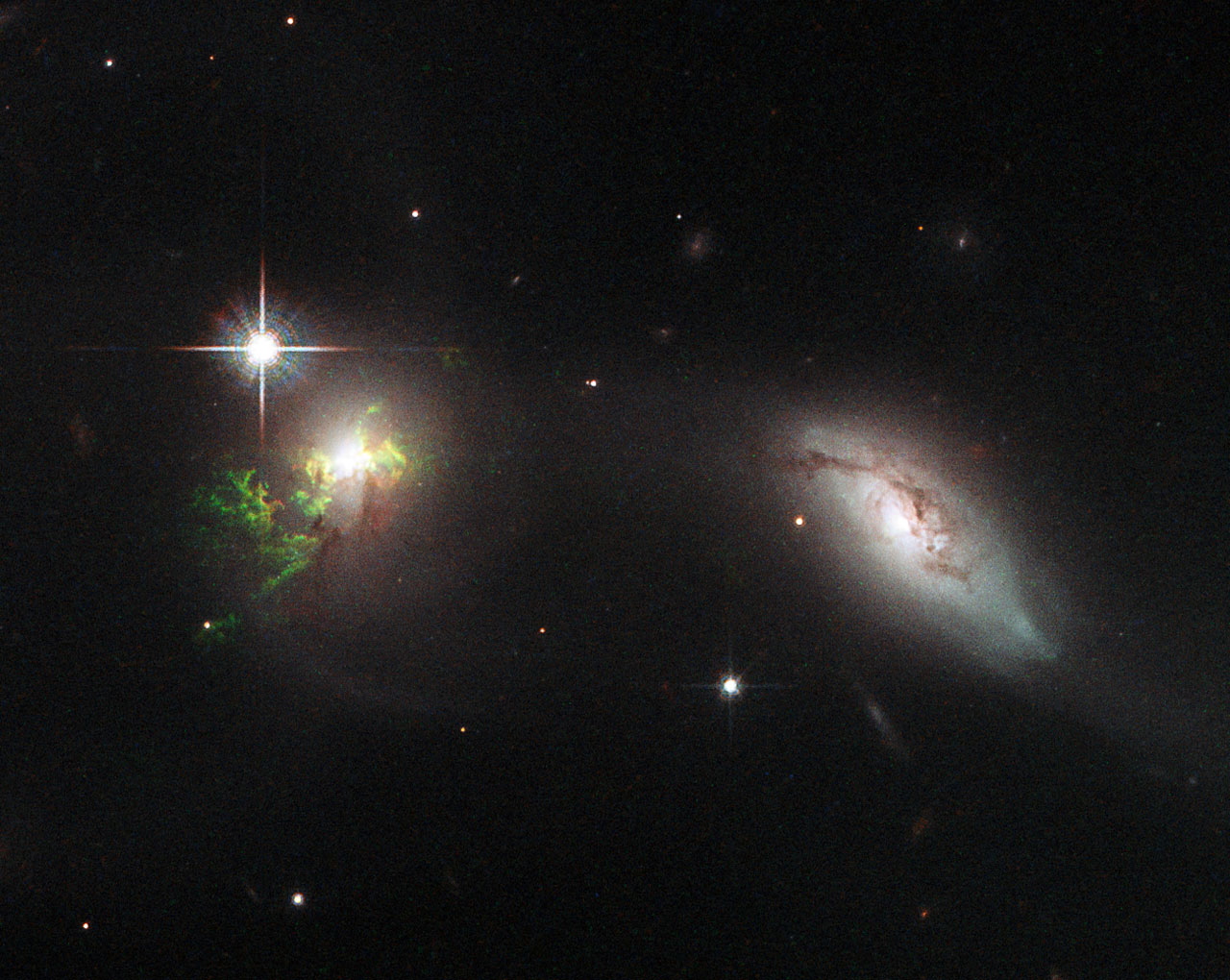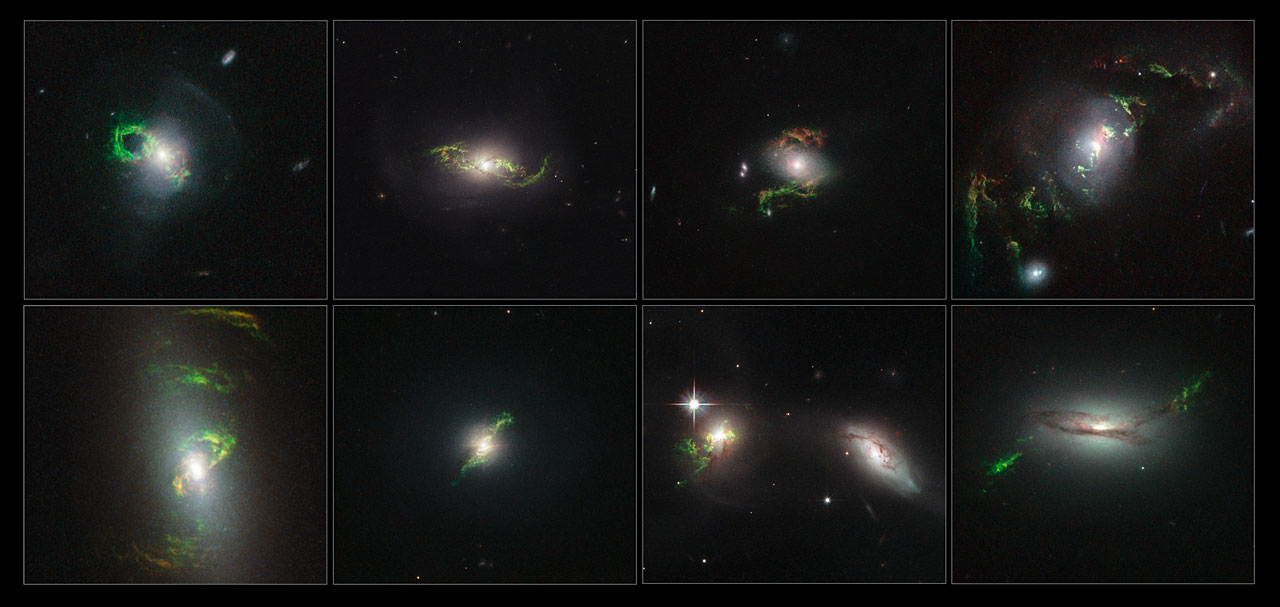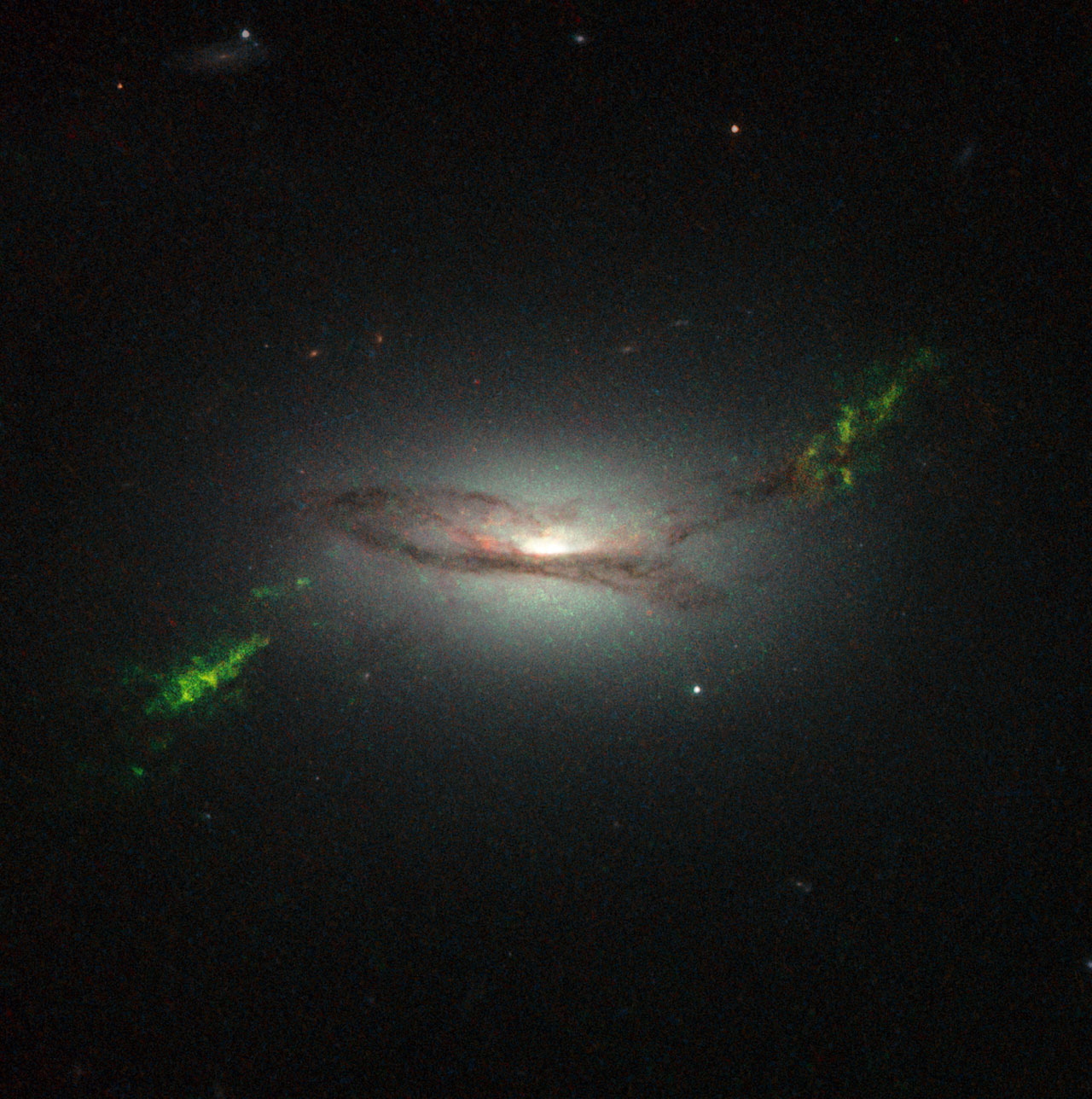Eerie Green Space Clouds Glow in New Hubble Photos

Green clouds of gas tens of thousands of light-years wide blaze in a series of stunning new images captured by the Hubble Space Telescope.
The eight eerie objects betray the past presence of quasars, the most luminous objects in the universe, whose powerful beams of radiation lend the clouds their ethereal glow, researchers said.
"In each of these eight images, a quasar beam has caused once-invisible filaments in deep space to glow through a process called photoionization," officials with the European Space Agency (ESA), which partners with NASA on the Hubble project, wrote in a statement. [See photos of the glowing green space clouds]
"Oxygen, helium, nitrogen, sulphur and neon in the filaments absorb light from the quasar and slowly re-emit it over many thousands of years," the officials added. "Their unmistakable emerald hue is caused by ionized oxygen, which glows green."
Quasars are incredibly bright galactic cores powered by supermassive black holes. As gas and dust fall toward the black hole from its surrounding "accretion disk," the material heats up to tremendously high temperatures. This process can result in a quasar, which blasts jets of high-energy radiation and particles out into space.
The quasars that lit up the eight gas clouds spotted by Hubble have since died out; the clouds lie far from the centers of their respective galaxies, so it took many thousands of years for the quasars' beams to reach the clouds.
Violent galactic mergers probably formed the clouds themselves, ESA officials said.
Breaking space news, the latest updates on rocket launches, skywatching events and more!
"Galactic mergers do not just alter the forms of the previously serene galaxies involved; they also trigger extreme cosmic phenomena," ESA officials wrote in the statement. "Such a merger could also have caused the birth of a quasar, by pouring material into the galaxies' supermassive black holes."
The first glowing green space cloud was spotted in 2007 by Dutch schoolteacher Hanny van Arkel, and as a result was called "Hanny's Voorwerp" (which means "Hanny's Object" in Dutch). Van Arkel found the cloud while participating in an online Galaxy Zoo project that asked volunteers to classify more than 1 million galaxies catalogued in the Sloan Digital Sky Survey (SDSS).
The eight glowing clouds newly imaged by Hubble were first discovered by citizen scientists as well: A Galaxy Zoo spinoff project tasked 200 people with searching 16,0000 SDSS galaxy images for objects that resemble Hanny's Voorwerp, ESA officials said.
Astronomers went through the volunteers' finds and identified 20 different galaxies that contained quasar-illuminated clouds. The researchers are publishing their results in The Astronomical Journal.
The eight clouds featured in the new Hubble images are found in the following galaxies (clockwise from top left in main image): 2MASX J14302986+1339117, NGC 5972, 2MASX J15100402+0740370, UGC 7342, 2MASX J22014163+1151237, UGC 11185, Mrk 1498 and NGC 5252.
Follow Mike Wall on Twitter @michaeldwall and Google+. Follow us @Spacedotcom, Facebook or Google+. Originally published on Space.com.

Michael Wall is a Senior Space Writer with Space.com and joined the team in 2010. He primarily covers exoplanets, spaceflight and military space, but has been known to dabble in the space art beat. His book about the search for alien life, "Out There," was published on Nov. 13, 2018. Before becoming a science writer, Michael worked as a herpetologist and wildlife biologist. He has a Ph.D. in evolutionary biology from the University of Sydney, Australia, a bachelor's degree from the University of Arizona, and a graduate certificate in science writing from the University of California, Santa Cruz. To find out what his latest project is, you can follow Michael on Twitter.


